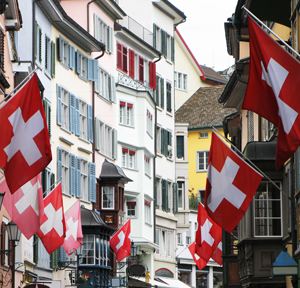Reports
Julius Baer's Results Shine In H1; Profits Rise

One of the paradoxes of the first-half period of 2020 is that client activity increased amidst the global pandemic, helping to boost operating income and offsetting some forces such as low interest rates and a higher credit loss provision. AuM, however, did drop from the end of 2019.
Julius Baer today reported a 34 per cent rise in adjusted net profit for the first six months of 2020 from the same period a year ago, coming in at SFr524 million ($557.8 million).
Net profit attributable to shareholders was SFr491 million,
rising by 43 per cent year-on-year, Julius Baer said.
The bank said that cost controls and a strategy push to improve
client coverage and its value proposition has started to bear
fruit. The results will be particularly encouraging at a time
when the global economy has been affected by the pandemic.
Results showed that client activity has actually increased,
perhaps one of the ironies of the COVID-19 episode for the wealth
management industry.
Operating income for the period was SFr1.851 billion, up by 9 per
cent, the Zurich-listed private bank said.
The rise in operating income was driven by a strong gain in
client activity, and this outweighed the combined impact of lower
net interest income and higher net credit losses on financial
assets, it said. The operating income figure was hit by SFr49
million of provisions booked under net credit losses on financial
assets (H1 2019: net recoveries of SFr3 million).
In H1 2020, the bank booked SFr5.0 billion in net new money, down
from SFr6.2 billion a year earlier. Julius Baer said there were
“solid inflows” from clients based in Europe, particularly
Germany, the UK, Ireland and Luxembourg, and in Asia,
particularly Hong Kong and Japan.
Assets under management fell, however, reflecting market
movements over the period – covering the time when the COVID-19
pandemic hit – easing to SFr401.8 billion at the end of June,
from SFr426 billion at the end of 2019.
At the end of June, Julius Baer reported a gross margin of 92
basis points, rising from 80 bps at the end of 2019. Operating
costs were SFr1.234 billion in the half-year period to June this
year, slipping by 0.2 per cent year-on-year.
Julius Baer said it had a Common Equity Tier 1 capital ratio – a
standard international financial buffer measure – of 13.9 per
cent – “well above” minimum regulatory requirements and the
group’s own internal yardsticks.
“The outstanding results in the first half of 2020 demonstrate
the strength and resilience of our pure wealth management model.
We have continued to implement our strategy of sharpening the
value proposition for our HNW and UHNW clients and transforming
our client coverage models,” Philipp Rickenbacher, chief
executive, said.
“Taking advantage of the increased need for digital client
connectivity and remote working solutions, we have prioritised
our technology investments accordingly, accelerating our ambition
to make our hallmark personal advice even more scalable. All of
these steps will support the shift in our leadership focus
towards sustainable profit growth, as we outlined in February,”
he continued.